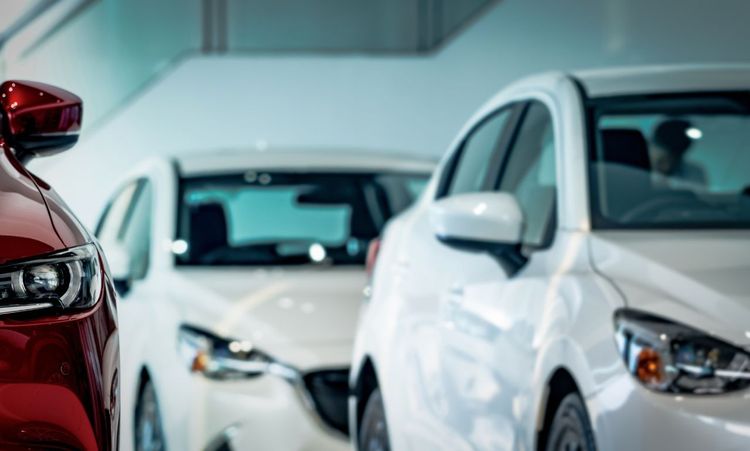Car wax enhances your vehicle's hydrophobic properties, making water beads up and roll off instead of soaking into its surface, making cleaning and removal of contaminants simpler and quicker. Traditional car waxes are made with leaves from the carnauba palm and offer a deep shine that many car enthusiasts greatly value. Polymer-based waxes, however, utilize advanced synthetic materials that offer greater durability and protection to provide lasting protection.
How to Remove Wax
Knowledge of how to remove car wax is a fundamental aspect of detailing, both amateur and professional alike. While it may be confusing, learning the proper way to strip and remove traditional carnauba-based wax from vehicle paintwork should not be difficult or complex. Start by making sure the old coat of wax has been completely removed, using various methods. One is pouring water on the panel and seeing if any beads or rolls off; the more beads or rolls indicate more wax is present on that area of the car. A clay bar can quickly lift any surface residue for quick preparation for new layers of waxing. If you choose to use a clay bar, make sure it's regularly checked for debris that could scratch paintwork and clear coat. Also take caution in not applying too hard as this will result in damaging both paintwork and trim.
Preparation
Car waxing is an integral component to maintaining an attractive and protected paint job on your vehicle, but not all waxes are created equal; choosing the wrong wax can not only leave an unattractive finish behind, but may cause irreparable damage as well. Make sure your vehicle's paint and plastic trim are in tiptop condition for applying new wax by taking time to properly prepare the surface before starting application of any new products. This starts by thoroughly rinsing off, using appropriate products for surface cleaning, and finishing off with an Isopropyl Alcohol (IPA) wipe down wipe down. IPA is an excellent degreaser, but its real strength lies in loosening any stuck-on bits of wax. When applied properly, this solution will completely eradicate any leftover wax residue, giving your car an ideal surface that's ready for further treatment with wax of choice. Clay bar or clay mitt are essential pre-wax cleaning tools, available from most auto shops or hardware stores that sell car care products. When used alongside an appropriate lubricant spray designed specifically for this task, these specialist detailing tools lift away stubborn surface contaminants that prevent new wax from bonding properly with painted surfaces - leaving behind a cleaner look compared to simply washing and drying the car.
Wax Remover
Car wax remover quickly and efficiently breaks down and dissolves layers of wax build-up on paint surfaces, leaving them ready for new applications. You can apply it by hand or with a buffing machine; its application should take no more than five minutes per vehicle. A good car wax remover also helps dissolve contaminants like grease, road film and silicone that build up on them over time - an effective pre-wash treatment as well as cleaning minor scratches and swirl marks before applying paint correction polishes. Car wax applications vary in their effectiveness depending on the condition of both paint and clear coat surfaces. Over time, layers of old wax may accumulate on paint's surface and hinder its ability to repel water and reflect light - so clearing away those layers enables a fresh layer of wax to perform at its maximum capacity. Regular car washings, using brushes or other abrasive materials and choosing pH-balanced soap that's gentle on its surfaces are all great ways to strip away layers of wax that build up over time. But choosing pH-neutral soap with gentle surface cleaners may also help keep this protective coating intact. Wax residue on plastic trim can make a vehicle appear dirty or dull, as well as degrade and corrode it over time, leaving more vulnerable plastic surfaces susceptible to further damage. A plastic cleaner designed without harmful surfactants such as BLACKFIRE's Premium Plastic Trim Cleaner may help remove this buildup while protecting these plastic surfaces from further deterioration.
Isopropyl Alcohol
Isopropyl alcohol (IPA), more commonly referred to as "rubbing alcohol", has numerous industrial and household applications. As a colorless, flammable solvent with its own distinctive odor, IPA is one of the most frequently utilized types of alcohol solvents. As a cleaning solution, isopropyl alcohol quickly dissolves non-polar compounds without leaving behind oil traces, and is safer than some common solvents such as acetone. Isopropyl alcohol is an ideal solution for cleaning metal surfaces without damaging them, making it suitable for use on polished or textured surfaces. Furthermore, isopropyl alcohol disinfects surfaces - and is widely utilized within medical settings for sterilizing equipment and surfaces. Isopropyl alcohol is an invaluable tool for automotive professionals, providing optimal brake function. Not only that, it can be used for minor paint touch ups and corrections as well. While most of our customers prefer pH-balanced cleaners for washing their cars, others are interested in the added protection a wax or ceramic coating provides. A high-quality wax or ceramic coating helps your vehicle remain cleaner longer while helping prevent bird droppings and road grime damage to its paintwork.




